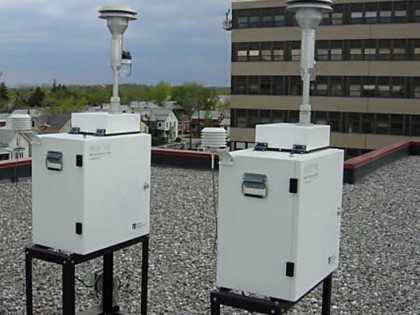Air Quality Monitoring
Our team members contribute to the shared success of business systems and our clients through our innovative solutions. We have a diverse work force with expertise in various fields such as testing drinking water, surveying noise pollution, conducting indoor air quality tests and providing other environmental control services. At One Stop Safety Services, we offer unique services for monitoring and testing air quality. We prioritize staying updated with the latest technology and its application to ensure the delivery of high quality services. Our solutions are cost effective for our customers.
Air quality monitoring involves the examination of air emissions. The quality of air deteriorates due to the release of harmful pollutants, which contribute to climate change. There are different methods available to measure air quality such as using laser machines to analyze particulate matter, employing sensors to detect specific pollutants or utilizing satellite imagery to assess pollution levels.It involves the use of specialized instruments and techniques to collect data on air quality parameters such as nitrogen dioxide,sulfur dioxide,ozone,carbon monoxide and volatile organic compounds. Air pollution can occur in various ways, including emissions from human activities involving nonrenewable energy sources. Air quality monitoring tests are conducted over a period of time, and the results provide insights into trends and patterns related to air quality. This information helps identify highly polluted areas and areas with lower levels of pollution. Additionally, the data can reveal whether pollution is increasing due to industrial waste emissions or the growing use of hydrocarbon based waste.
Types of Air Quality Monitoring
- Ambient air quality testing
- Indoor air quality testing
- Stack emission testing
Advantages of Air Quality Monitoring
- Health Protection: Air quality monitoring helps protect public health by providing timely information about the levels of pollutants in the air. High levels of pollutants can have adverse effects on human health, leading to respiratory problems, cardiovascular issues and other illness. By monitoring air quality, authorities can take appropriate actions to minimize exposure and mitigate health risks.
- Pollution Source Identification: Monitoring air quality allows for the identification of specific sources of pollution. By analyzing the data collected from monitoring stations, it becomes possible to pinpoint the locations and activities contributing to poor air quality. This information is crucial for implementing targeted measures to reduce emissions and improve air quality in affected areas.
- Environmental Policy Development: Air quality monitoring provides valuable data for the development and evaluation of environmental policies and regulations.
- Public Awareness and Education: By making air quality data publicly available, monitoring programs raise awareness among the general population about the state of the air they breathe. This information empowers individuals to take necessary precautions, make informed lifestyle choices and advocate for policies that promote cleaner air.
- Evaluation of Mitigation Measures: Air quality monitoring allows for the assessment of the effectiveness of pollution control measures and mitigation strategies. By comparing air quality data before and after the implementation of interventions, policymakers and researchers can determine the impact of their actions and make necessary adjustments for improvements.
- Early Warning Systems: Monitoring systems can serve as early warning systems for episodes of poor air quality such as industrial accidents. By detecting changes in pollutant levels, authorities can issue alerts and take preventive measures to protect vulnerable populations and mitigate potential health hazards.


